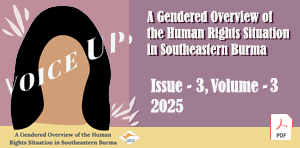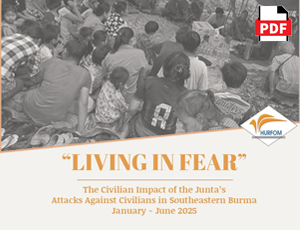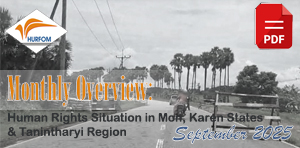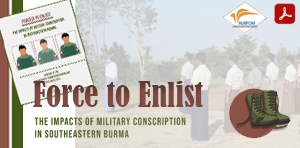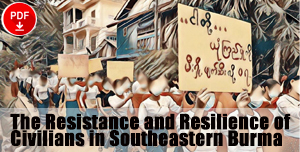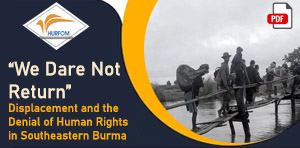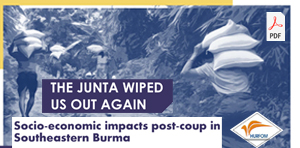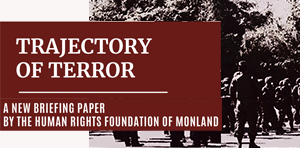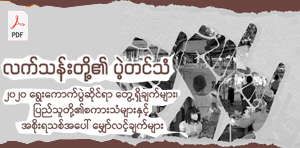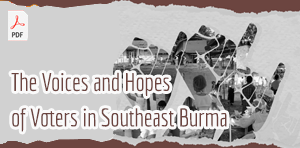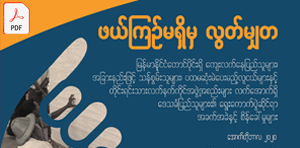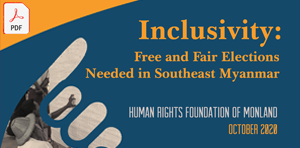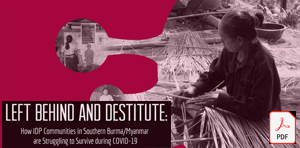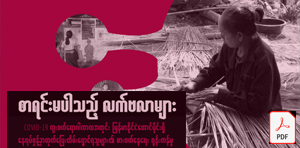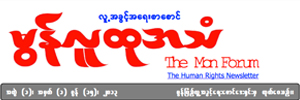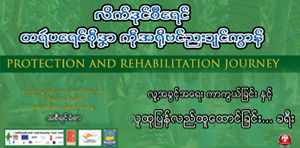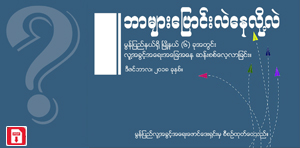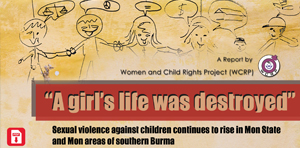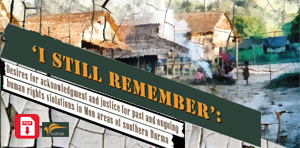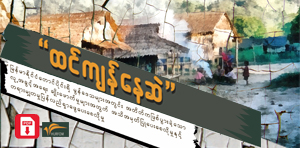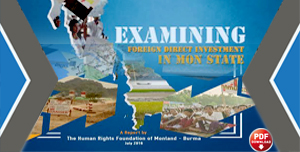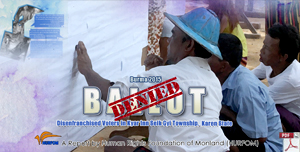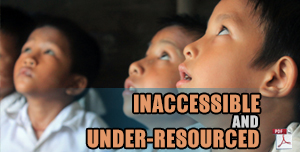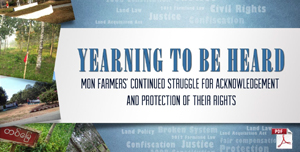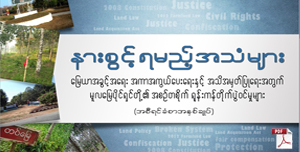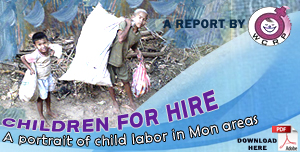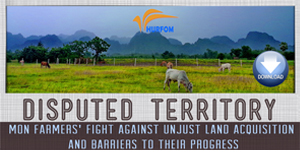When It Rains, It Pours: IDPs in Southern Burma Face Compounding Crises Amid Junta Attacks
May 8, 2025
In northern Tanintharyi Region’s Yebyu Township, nearly 800 civilians from Min Thar village tract have been displaced for over two weeks. After fleeing their homes to escape fierce clashes and junta airstrikes, these families now face a second wave of suffering—food shortages, lack of clean water, and the spread of disease.
Fighting erupted on 20 April when joint resistance forces from Mon, Karen, and Tavoyan units launched coordinated attacks on junta bases in Min Thar. As airstrikes and heavy shelling followed, residents from at least five villages—Sinswe, Ye Ngan Gyi, Shin Kyi Eain, Sein Bone, and Kywe Tha Lin—fled into nearby forests, farms, and any location they believed to be temporarily safe. Many have yet to find stable shelter.
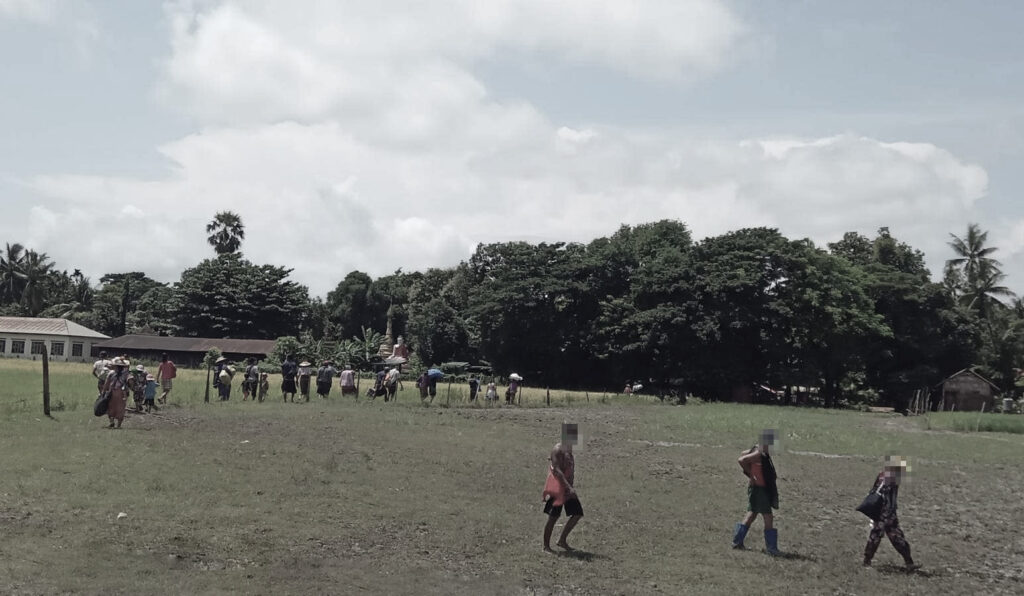
“There are sick children suffering from malnutrition and people with high fevers who need medicine,” said one local relief worker. “They have no rice, no clean drinking water, and no way to access help. Most are hiding in fields or nearby forest shelters—some managed to reach Ye town, but not everyone has that option.”
The IDPs’ displacement began around 22 April, as people fled villages along the Ye-Dawei highway corridor—Alae Sakhan, Kyauk Kadin, Yapu, and Kywe Tha Lin among them—seeking refuge anywhere out of reach of junta fire.
Relief groups say the displacement crisis is deepening because most of these areas are inaccessible to humanitarian teams. “It’s not just food and medicine they need now—water is running dry, and people are too afraid to move because of junta landmines and constant artillery shelling,” one emergency responder added.
The situation worsened on 7 May when the junta’s Mawrawaddy Naval Command used riverboats to move toward Kywe Thone Nyima and launched artillery fire into Nat Kyi Sin village, forcing even more families to flee toward the hills near Pauk Pin Kwin.
“There wasn’t any clash at the time,” said a local source. “They just fired into the village. One shell exploded near the football field, and another near Shin Kyi Eain. Everyone fled to the hilltop.”
Villages across the Min Thar tract now face near-daily bombardments from junta forces, including troops from Light Infantry Battalion No. 282 based in Kalein Aung. Residents of nearby Mon communities—Alae Sakhan, Yapu, Kyauk Kadin, Kywe Tha Lin, and Sinswe—have also been uprooted by the violence, leaving behind farms and livelihoods with no clear way to return.
“Some of them have been displaced for two or even three weeks already,” said a Mon youth involved in relief efforts. “The rice and dried goods they brought with them are gone. This area is completely cut off—no food or medicine can be delivered. People are now trying to forage in the jungle, but even that’s dangerous because of junta landmines. Drones circle overhead, and they fear bombs could fall at any moment.”
With aid unable to reach many IDPs, a humanitarian disaster is looming. Even makeshift shelter is scarce, and the threat of starvation grows daily.
Meanwhile, on 6 May, the junta announced an extension of its so-called “ceasefire” until the end of the month. But the violence on the ground tells a different story.
According to HURFOM’s documentation, throughout April alone, the junta launched 244 airstrikes. These killed at least 201 civilians and injured more than 300 others. Despite the claimed ceasefire, conflict has only intensified in May—especially in southern Burma—fueling new waves of displacement.
The displaced communities of Dawei, Mon, and Karen continue to pay the price. Already traumatized by airstrikes and forced to flee, they now face hunger, sickness, and fear with little to no support.
As one aid worker put it: “This is when it rains, it pours. People are running from bombs straight into empty fields with nothing to eat and nowhere safe to rest. It’s not just a humanitarian emergency—it’s the collapse of all basic human dignity.”



